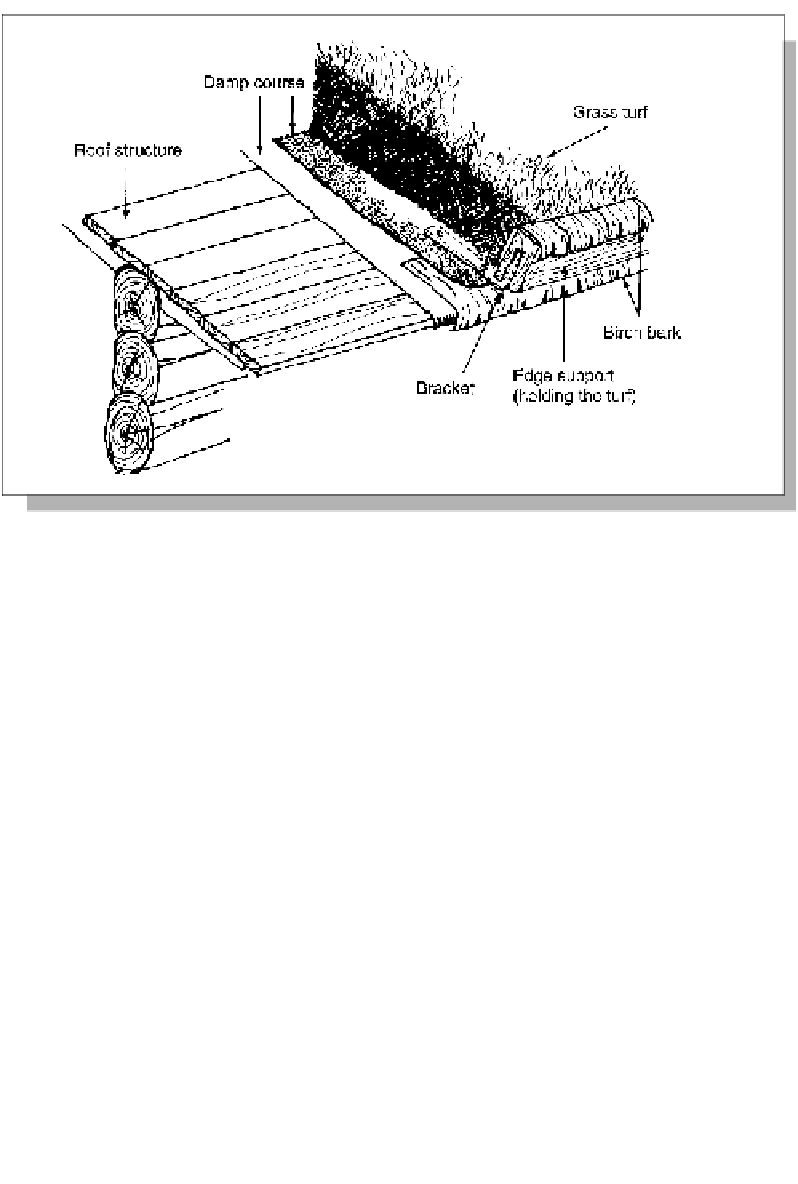Civil Engineering Reference
In-Depth Information
Figure 15.12: Principles for using turf covering on a sloping roof. Source: Norwegian Building
Research Institute
over a dry period and even reduce fire risk. There are evidently many advan-
tages to a varied flora on the roof (see page 161).
The earth layers
The usual turf for a roof comprises grass that is well bound by its roots, cut up
into pieces 30
15 cm thick. In Norway it is normal
practice to use two layers of turf, the lower with grass downwards and upper
with the grass on top. On the ridge, longer pieces of turf are used. Even loose
earth can form a top layer, compressed to the same thickness as the turf. On a
sloping roof, it is advantageous to lay a chicken net with 2-3 cm of earth on it
before compressing the earth and sowing. For a roof with a slope of more than
27° it is necessary to lay battens to hold the turf in place (see Figure 15.13).
These are not fixed through the roof covering but at the ridge, to each other, or
resting on a batten at the eaves of the roof. The battens do not have to be of a
very durable material, as they lose their function when the system of roots
binds together.
The earth should have plenty of humus, which can be increased by mixing in
compost or peat. A depth of at least 15 cm of earth is recommended. A thinner
layer will dry out or erode easily. For sedum species, which are particularly
30 cm and about 10

